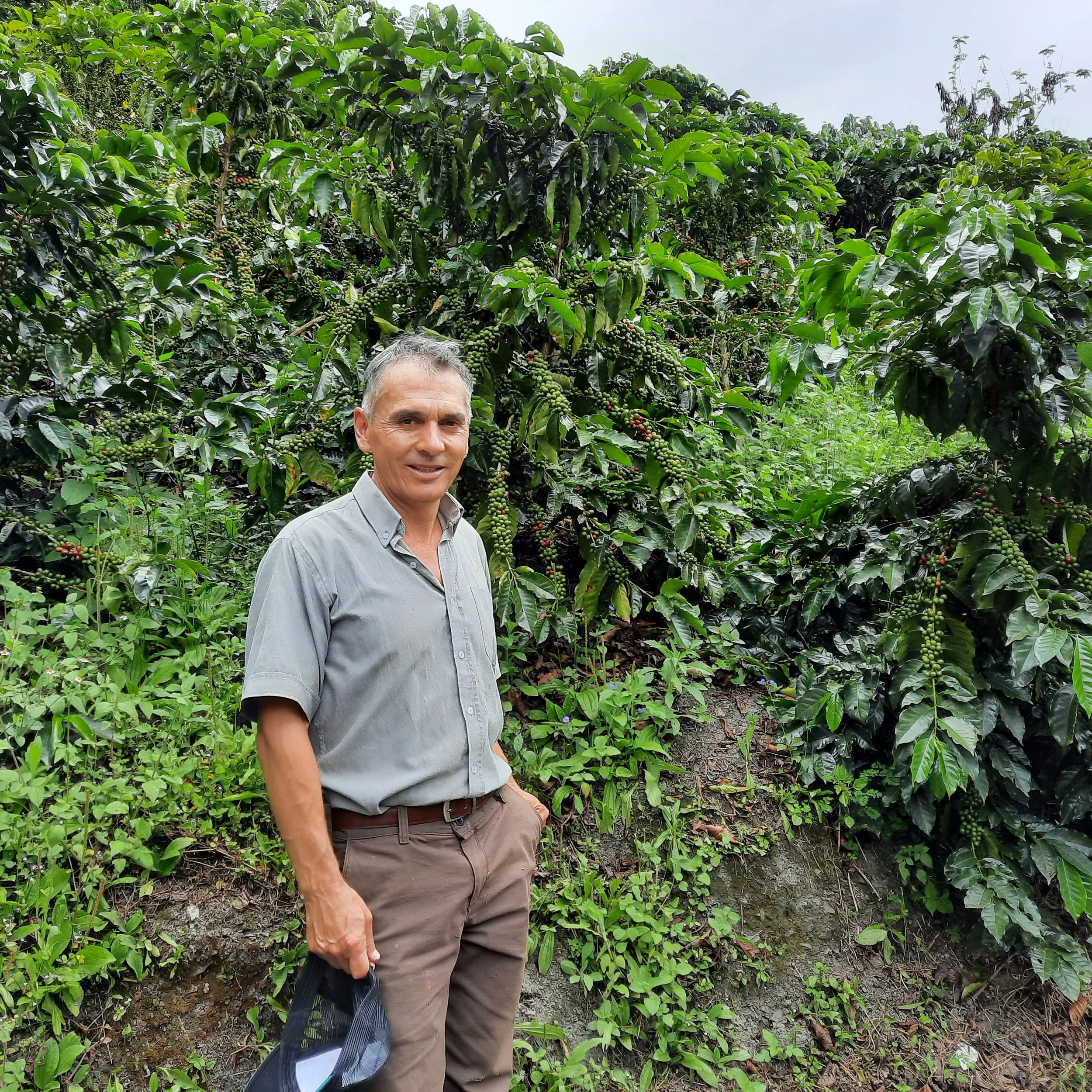Santa Maria - Geisha - Washed
Finca Santa Maria is located on the slopes of a mountainous area of Nariño on the border with Ecuador at an altitude of 1850 masl. In many regions, producing coffee at such a high altitude is a challenge, but Nariño is quite close to the equator, and its climatic conditions are sufficiently suited to the cultivation of coffee trees
Finca Santa Maria has existed for more than 50 years. Armando Benavides bought it 30 years ago, and he works there with his family to this day.
They cultivate different varieties spread over 8 hectares. Armando promotes sustainable agricultural practices, such as agroforestry, composting, polyculture, and working the land to reduce the use of chemical inputs.
Finca Santa Maria is located on the slopes of a mountainous area of Nariño on the border with Ecuador at an altitude of 1850 masl. In many regions, producing coffee at such a high altitude is a challenge, but Nariño is quite close to the equator, and its climatic conditions are sufficiently suited to the cultivation of coffee trees
Finca Santa Maria has existed for more than 50 years. Armando Benavides bought it 30 years ago, and he works there with his family to this day.
They cultivate different varieties spread over 8 hectares. Armando promotes sustainable agricultural practices, such as agroforestry, composting, polyculture, and working the land to reduce the use of chemical inputs.
Finca Santa Maria is located on the slopes of a mountainous area of Nariño on the border with Ecuador at an altitude of 1850 masl. In many regions, producing coffee at such a high altitude is a challenge, but Nariño is quite close to the equator, and its climatic conditions are sufficiently suited to the cultivation of coffee trees
Finca Santa Maria has existed for more than 50 years. Armando Benavides bought it 30 years ago, and he works there with his family to this day.
They cultivate different varieties spread over 8 hectares. Armando promotes sustainable agricultural practices, such as agroforestry, composting, polyculture, and working the land to reduce the use of chemical inputs.





